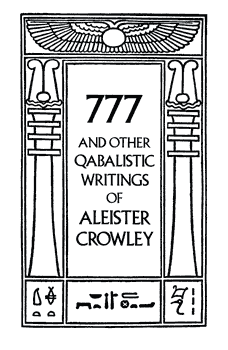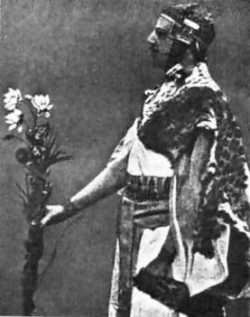Related Research Articles

The Hermetic Order of the Golden Dawn, more commonly the Golden Dawn, was a secret society devoted to the study and practice of occult Hermeticism and metaphysics during the late 19th and early 20th centuries. Known as a magical order, the Hermetic Order of the Golden Dawn was active in Great Britain and focused its practices on theurgy and spiritual development. Many present-day concepts of ritual and magic that are at the centre of contemporary traditions, such as Wicca and Thelema, were inspired by the Golden Dawn, which became one of the largest single influences on 20th-century Western occultism.
A magical organization or magical order is an organization or secret society created for the practice of initiation into ceremonial or other forms of occult magic or to further the knowledge of magic among its members. Magical organizations can include Hermetic orders, esoteric societies, arcane colleges, and other groups which may use different terminology and similar though diverse practices.

777 and Other Qabalistic Writings of Aleister Crowley is a collection of papers written by Aleister Crowley. It is a table of magical correspondences. It was edited and introduced by Dr. Israel Regardie, and is a reference book based on the Hermetic Qabalah.

A pentacle is a talisman that is used in magical evocation, and is usually made of parchment, paper, cloth, or metal, upon which a magical design is drawn. Symbols may also be included, a common one being the six-point form of the Seal of Solomon.

Francis Israel Regardie was an English and American occultist, ceremonial magician, and writer who spent much of his life in the United States. He wrote fifteen books on the subject of occultism.

Samuel Liddell MacGregor Mathers, born Samuel Liddell Mathers, was a British occultist and member of the S.R.I.A.. He is primarily known as one of the founders of the Hermetic Order of the Golden Dawn, a ceremonial magic order of which offshoots still exist. He became so synonymous with the order that Golden Dawn scholar Israel Regardie observed in retrospect that "the Golden Dawn was MacGregor Mathers."

The A∴A∴ is a magical organization established in 1907 by Aleister Crowley, a Western esotericist. Its members are dedicated to the advancement of humanity by perfection of the individual on every plane through a graded series of universal initiations. Its initiations are syncretic, unifying the essence of Theravada Buddhism with Vedantic yoga and ceremonial magic. The A∴A∴ applies what it describes as mystical and magical methods of spiritual attainment under the structure of the Qabalistic Tree of Life, and aims to research, practise, and teach "scientific illuminism".
The Bornless Ritual, also known as the Preliminary Invocation of the Goetia or simply Preliminary Invocation, originates from the Graeco-Egyptian Papyri Graecae Magicae (PGM), a collection of ancient spells, invocations, and hymns compiled between the 2nd century BCE and the 5th century CE. Initially used for exorcism and healing, the ritual invokes the "Headless One". In modern times this entity has been re-interpreted as the "Bornless One" without beginning or end, who symbolizes the unity of the divine and the practitioner. Some interpretations suggest that the ritual may have connections with the Egyptian god Set. It is also called the "Headless Rite" or the "Invocation of the Bornless One".
Abrahadabra is a significant word within Thelema, received and revealed by Aleister Crowley in The Book of the Law, the central sacred text of Thelema. This magical formula represents the Great Work accomplished—the union of the microcosm (individual) and the macrocosm (universe). It is considered the key to the Aeon of Horus and a word of power that symbolizes the realization of True Will.

A lamen is a magical parchment or pendant, sometimes acting as a protective 'magical breastplate' worn around the neck so that it hangs upon the breast over the heart. Its uses vary but, most commonly, the term refers to a symbol of authority and a focus of magical energies.
In the esoteric philosophy of Thelema, founded by Aleister Crowley in the early 20th century, an Aeon is a period of time defined by distinct spiritual and cultural characteristics, each accompanied by its own forms of magical and religious expression. Thelemites believe that the history of humanity is divided into a series of these Aeons, each governed by a particular deity or archetype that embodies the spiritual formula of the era.
Aleister Crowley was an English writer, not only on the topic of Thelema and magick, but also on philosophy, politics, and culture. He was a published poet and playwright and left behind many personal letters and daily journal entries. Most of Crowley's published works entered the public domain in 2018.

Magick, Liber ABA, Book 4 is a book by 20th-century occultist Aleister Crowley. It is widely considered to be his magnum opus.

In ceremonial magic, a magical formula or a word of power is a word that is believed to have specific supernatural effects. They are words whose meaning illustrates principles and degrees of understanding that are often difficult to relay using other forms of speech or writing. It is a concise means to communicate very abstract information through the medium of a word or phrase.
In ceremonial magic, banishing refers to one or more rituals intended to remove non-physical influences ranging from spirits to negative influences. Although banishing rituals are often used as components of more complex ceremonies, they can also be performed by themselves. Banishing can be viewed as one of several techniques of magic, closely related to ritual purification and a typical prerequisite for consecration and invocation.
The Stella Matutina was an initiatory magical order dedicated to the dissemination of the traditional occult teachings of the earlier Hermetic Order of the Golden Dawn. Originally, the outer order of the Stella Matutina was known as Mystic Rose or Order of the M.R. in the Outer. When occult writer Israel Regardie released documents of the Golden Dawn to the public it was the teachings of the Stella Matutina that he revealed, not those of the original order. The Stella Matutina was one of several daughter organisations into which the Hermetic Order of the Golden Dawn fragmented, including the Alpha et Omega led by John William Brodie-Innes and Macgregor Mathers, the Isis-Urania Temple led by A. E. Waite, and others.

The Alpha et Omega was an occult order, initially named the Hermetic Order of the Golden Dawn, co-founded in London, England by Samuel Liddell MacGregor Mathers in 1888. The Alpha et Omega was one of four daughter organisations into which the Hermetic Order of the Golden Dawn fragmented, the others being the Stella Matutina; the Isis-Urania Temple led by A. E. Waite and others; and Aleister Crowley's A∴A∴. Following a rebellion of adepts in London and an ensuing public scandal which brought the name of the Golden Dawn into disrepute, Mathers renamed the branch of the Golden Dawn remaining loyal to his leadership to "Alpha et Omega" sometime between 1903 and 1913. "The title was usually abbreviated as A.O." and according to some sources its full name was "Rosicrucian Order of Alpha et Omega". All of the temples of the order appear to have gone out of existence by the Second World War.

The Isis-Urania Temple was the first temple of the Hermetic Order of the Golden Dawn. The three founders, Dr. William Robert Woodman, William Wynn Westcott, and Samuel Liddell MacGregor Mathers, were Freemasons and members of Societas Rosicruciana in Anglia (S.R.I.A.). It continued as one of four daughter organisations into which the Hermetic Order of the Golden Dawn fragmented, the others being the Alpha et Omega, the Stella Matutina and Aleister Crowley's A∴A∴.
George Cecil Jones, Jr., was an English chemist, occultist, one time member of the Hermetic Order of the Golden Dawn and co-founder of the magical order A∴A∴. According to author and occultist Aleister Crowley, Jones lived for some time in Basingstoke, Hampshire, England, working at a metallurgy there.

Hermetic Qabalah is a Western esoteric tradition involving mysticism and the occult. It is the underlying philosophy and framework for magical societies such as the Hermetic Order of the Golden Dawn, has inspired esoteric Masonic organizations such as the Societas Rosicruciana in Anglia, is a key element within the Thelemic orders, and is important to mystical-religious societies such as the Builders of the Adytum and the Fellowship of the Rosy Cross.
References
- Crowley, Aleister (edited by Stephan Skinner) Magical Diaries of Aleister Crowley; Tunisia 1923 (1999) ISBN 0-87728-856-9
- King, Francis Modern Ritual Magic: The Rise of Western Occultism (1989) ISBN 1-85327-032-6
- Regardie, Israel What you should know about the Golden Dawn (1993) ISBN 1-56184-064-5